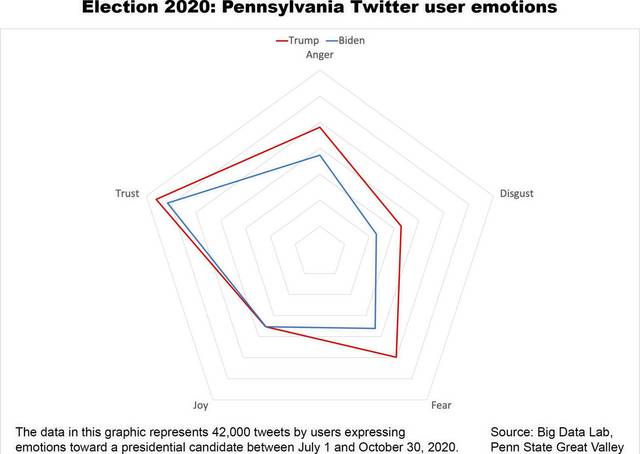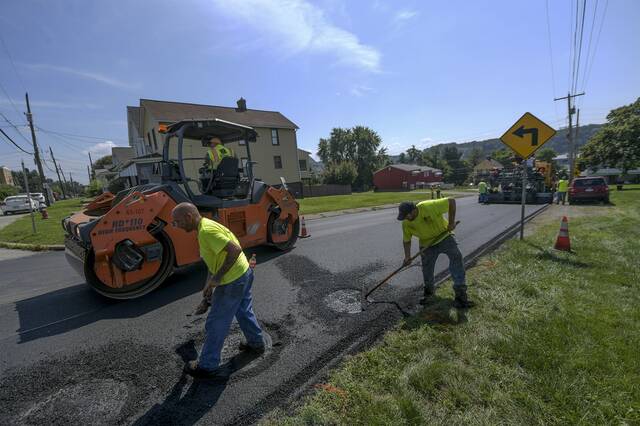As Americans went to bed Tuesday night, many wondered if they would wake up to a new president, much like they did four years ago.
But by 7 a.m. Wednesday morning, CNN’s Don Lemon put it best: “If anyone tells you they know, they don’t.” At that time several so-called battleground states were still waiting on results as ballots continued to be counted.
While some national pollsters predicted that Biden was likely to carry several of these key states, including Pennsylvania, our analysis using emotional classification of Twitter data shows a trend calling for caution, and may provide a truer picture of the national electorate than traditional polling methods.
Social media platforms such as Twitter can provide a window into the true emotions and sentiments of individuals since they can express themselves more freely without the fear of revealing their identity. New research is showing that analysis from these feelings can often better predict their support for issues, policies and political candidates running for an office.
Our Big Data Lab at Penn State Great Valley started tracking voter sentiment in 2016. At that time, our final analysis aligned closer to the outcome than many other predictions. For example, as polling slightly favored Democratic candidate Hillary Clinton in the state of Florida, our analysis found a 1.58% predicted margin of victory in favor of then-Republican candidate Donald Trump. (The actual margin was 1.20%.) Our overall social media sentiment analysis correctly predicted 17 of 19 states, with the remaining two being closely contested.
Similarly, we have been working with our graduate students since March to capture voter sentiment for the 2020 presidential election. After collecting more than 6 million tweets expressing emotions and sentiments toward Trump and Biden, we analyzed the fear, joy, disgust, sadness, surprise, anticipation, anger and trust expressed to generate overall net sentiment scores, sentiment scores on key issues, and predictions on how certain swing states will vote in the 2020 presidential election.
These analyses show just how close the election is in a subset of states deemed battleground and key to the outcome of the 2020 presidential election — Wisconsin, Michigan, Pennsylvania and Georgia.
Here in Pennsylvania, we determined the net positive score for each candidate, which is the difference between the fraction of the positive sentiment tweets and the fraction of the negative sentiment tweets — an indicator how people feel about a candidate overall. At the end of October, even though Biden had a better score, the gap had narrowed rapidly. Biden had gained momentum when he selected Sen. Kamala Harris as his running mate, but Trump reversed that trend with his nomination of Amy Coney Barrett as the Supreme Court justice.
A deeper analysis of the emotions contributing to this score revealed that even though there is more fear, disgust and anger for Trump, the electorate placed more trust in him when compared to Biden. Other battleground states showed a similar landscape — stronger emotions, both positive and negative, for the Republican candidate.
One prediction we can be sure of — as more people take their opinions to social media, the use of big data in capturing true electorate and population sentiment will continue to emerge as a strong predictor in future elections in concert with traditional polling. This approach will also be an important tool in other areas like government policymaking and corporate decision-making.
As researchers, we will continue to refine these analyses for future elections. In the meantime, we will join the rest of Americans — and the world — as election results unfold in the coming days.
Raghu Sangwan is an associate professor of software engineering and director of the Big Data Lab at Penn State Great Valley.








